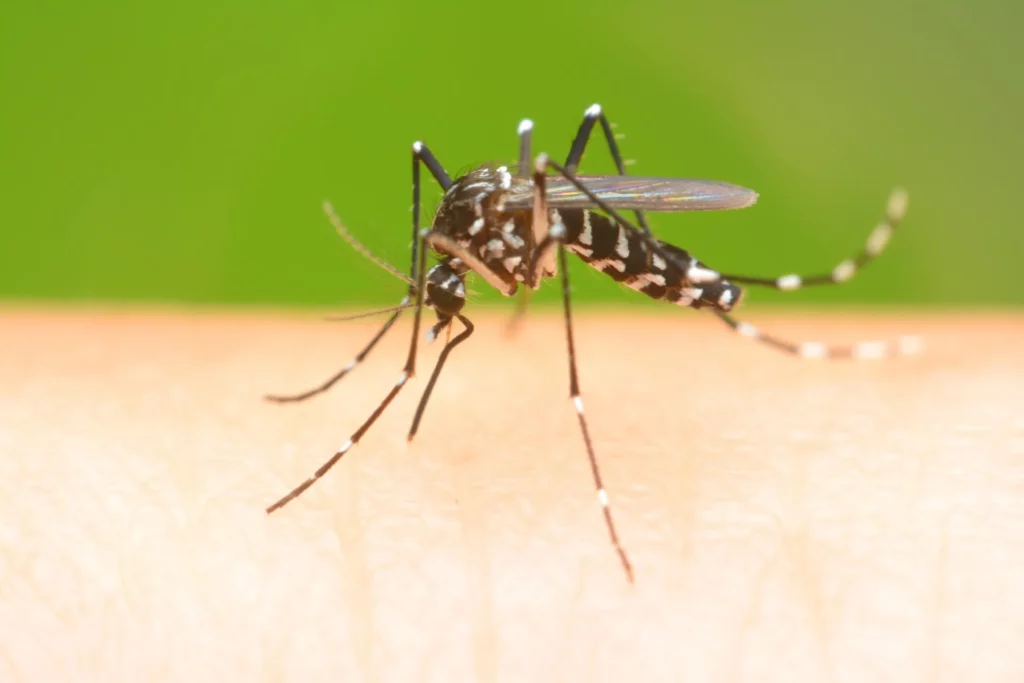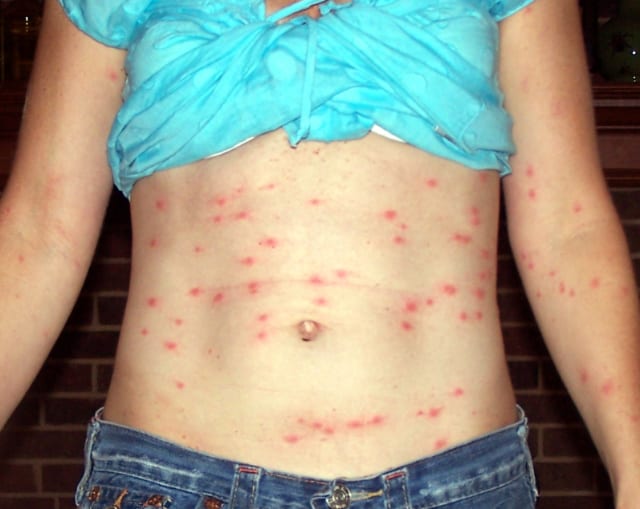
Weal insect bites are like nature's way of saying, "Hello, I was here!" These tiny encounters can range from a mild annoyance to a bothersome itch or, in some cases, a bit more drama. In the diverse world of insects, various species have developed unique methods of interaction with their environment, including how they bite humans or animals.
Understanding the types of insect bites is crucial not only for medical reasons but also for preventive measures. From the mild irritation caused by a common housefly to the more serious health threats posed by mosquitoes and ticks, the range of insect bites varies greatly in terms of symptoms and potential health risks.
At Critter Stop, we emphasize the importance of recognizing different insect bites and the necessary steps to mitigate their effects. Whether you're dealing with a mosquito bite that can transmit diseases like malaria or dengue, or a bee sting that causes acute allergic reactions in some individuals, being informed is the first step in effective prevention and treatment. Our exploration into the various types of insect bites aims to provide a comprehensive understanding, helping individuals and communities to stay safe and healthy.
Picture this: A picnic in the park, gentle breezes, and then...ouch! An unexpected insect bite. Insects, the tiny architects of nature, come in various shapes and sizes, and so do their bites. From the stealthy mosquitoes to the bold bees, each insect has its own signature move when it comes to leaving a mark on our skin. In this guide, we'll unravel the mysteries behind those itchy reminders of our outdoor adventures.
1. Description: Mosquitoes, the stealthy ninjas of the insect world, leave behind their calling card with a tiny, red bump. Their needle-like mouthparts delicately pierce the skin, seeking the liquid gold – your blood. The result? A maddeningly itchy welt.
2. Symptoms: Beyond the telltale red bump, mosquito bites are often accompanied by a symphony of itchiness, redness, and a mild swelling. Some lucky individuals might not react much, while others may experience a heightened sensitivity to these airborne intruders.
Depending on the kind of mosquito, you could be infected with viruses like dengue, chikungunya, and zika. Some symptoms can include a little rash, fever, and headache. It's not rare to see vomit in dengue patients, we always recommend seeing a Doctor if you have some of these symptoms.
3. Treatment: Soothing the itch doesn’t require a magic potion. Applying a cold compress or an anti-itch cream can work wonders. If you’re feeling adventurous, dabbing on some toothpaste or a drop of honey might provide sweet relief. Just remember, scratching is a temporary pleasure with long-lasting consequences – resist the urge!

1. Description: Flea bites often present as clusters of small, red, itchy bumps. These tiny acrobats, with a knack for jumping, leave their mark with pinpoint precision. While your pets might be their preferred hosts, fleas won't hesitate to take a nibble if you're in close proximity.
2. Symptoms: The aftermath of a flea feast? Annoyingly itchy skin and the unmistakable urge to scratch. Unlike mosquitoes, fleas often leave bites in groups, forming a distinctive pattern that sets them apart.
3. Treatment: Time to evict the circus from your skin! Over-the-counter anti-itch creams, cold compresses, or even a soothing oatmeal bath can provide relief. But remember, addressing the root cause – a potential flea infestation – is key to preventing future bites.
1. Description: Ticks aren’t just hitchhikers; they're stealthy bloodsuckers. Their bites often go unnoticed initially, as they embed themselves for a leisurely feast. The result? A red bump that might resemble a tiny bullseye.
2. Symptoms: Beware the potential accomplice – tick-borne diseases. While not every tick bite leads to trouble, it's crucial to monitor for signs of Lyme disease or other infections. Redness expanding from the bite site or flu-like symptoms could be red flags.
3. Treatment: Remove that tick like a pro! Tweezers, steady hands, and a gentle, upward pull are your best allies. Avoid folklore remedies like matches or nail polish. Clean the bite area thoroughly and keep a watchful eye on your health. When in doubt, consult a healthcare professional.
1. Description: Bed bugs are the nocturnal roommates you never asked for. Their bites often appear in straight lines or clusters, a roadmap of their nightly exploration. Red, itchy, and annoyingly persistent, these bites can turn your bed into a battleground.
2. Symptoms: It's not just the bites; it's the aftermath. Bed bug bites can trigger an allergic reaction in some, leading to more severe symptoms. Watch out for increased redness, swelling, or even blistering.
3. Treatment: Show those bed bugs the door! Wash the bites with soap and water, apply anti-itch creams, and resist the temptation to scratch. But remember, addressing the infestation at its source is the only way to truly end the bedtime saga.
1. Differentiating: Ant bites come in various shapes and sizes, just like the colonies they belong to. From the fiery bite of red ants to the less aggressive nibble of black ants, identifying the culprit can be the first step to relief.
2. Symptoms and Reactions: Ant bites aren’t just a momentary annoyance. Depending on the ant species, reactions can range from a minor pinch to severe allergic responses. Watch out for swelling, redness, or even the formation of pus at the bite site.
3. Effective Treatment Approaches: Ant bites don’t have to throw off your picnic. Wash the affected area, apply a cold compress, and consider over-the-counter creams. For more serious reactions or if you suffer some allergy, seek medical attention. And if you're feeling adventurous, maybe reevaluate your picnic spot!

1. Identification: Spiders, the architects of intricate webs, sometimes leave behind more than just silk. Identify spider bites by their appearance – from the classic red bump to more severe lesions.
2. Symptoms Varying by Spider Species: Not all spider bites are created equal. Symptoms can vary depending on the species involved. From mild irritation to more severe reactions, understanding the nuances can guide your course of action.
3. Appropriate Treatment Measures: Don’t get caught in a web of uncertainty. Clean the bite site, apply a cold compress, and keep an eye on any developing symptoms. For potentially venomous spiders, seek medical attention promptly. And remember, not all spiders are out to get you!
1. Understanding the Difference: Bees and wasps may be united by their love for flowers and their yellow color, but their stinging methods differ. Bees leave their stinger behind, while wasps can sting repeatedly. Knowing the difference can guide your response. A kiss from this flying animal could make you feel some pain.
2. Allergic Reactions and Emergency Responses: Sometimes, it’s more than just a sting. Allergic reactions to bee and wasp stings can be severe. Watch for difficulty breathing, muscle pain, swelling, or a rapid heartbeat. If these occur, don’t hesitate – seek emergency medical help.
3. Remedies: Soothe the sting without swatting the pollinators. Remove the stinger if it's a bee sting, wash the area, and apply a cold compress. Natural remedies like a paste of baking soda and water can also bring relief.

Let's see why insect bites make us scratch ourselves like crazy!
1. The Science Behind Itching:
2. Effective Itch Relief Strategies:
What type of insect bites cause blisters? let's take a look!
1. Identifying Blisters from Insect Bites:
2. Treatment to Alleviate Blisters:
1. Allergic Responses to Insect Bites:
2. Seeking Medical Attention for Severe Allergies:
Some insect bite leaves a hole which can be very scary. Lets take a deeper look into these types of bites.
1. Understanding Puncture-type Insect Bites:
2. Proper Care for Bites That Leave a Hole:
Something important that we have noted, is that there are some myths about insect bites. For example, one of the most common myths is that a mosquito bite could cause scabies, a disease that according to our research, its not possible.
When it comes to the great outdoors, an essential element of enjoying nature is keeping those pesky insect bites at bay. One of the practical strategies in your arsenal involves choosing the right clothing. Let's delve into the art of dressing strategically to fend off those tiny, but sometimes mighty, outdoor foes.
1. Best Fabrics to Ward Off Insects:
2. Dressing Smartly for Insect-Prone Areas:
1. Types of Insect Repellents:
2. Correct Application for Maximum Effectiveness:
These practical and proactive measures extend beyond the prevention of insect bites; they create a harmonious living space that prioritizes comfort and well-being. By incorporating these practices, you not only deter insects but also enhance the overall quality of your indoor and outdoor environments.
In the intricate tapestry of the insect world, bites come in various forms, each with its unique characteristics. From the stealthy nibbles of mosquitoes to the bold stings of bees, understanding these bites is the first step to effective prevention and treatment.
In the realm of insect bites, an ounce of prevention is indeed worth a pound of cure. By donning appropriate clothing, using insect repellents wisely, and maintaining pest-free living spaces, you're not just repelling insects but also safeguarding yourself from potential discomfort and health risks.
Proactive precautions are the unsung heroes in the narrative of outdoor adventures, ensuring that every exploration is marked by the beauty of nature rather than the annoyance of insect bites. If you're having some issues with mosquitoes… Critter Stop is your best option! We have provided mosquito control all over the Dallas-Fort Worth metroplex área. We understand how important it is for homeowners to put an end to this plague. Give us a call to (214) 234-2616 and get a free inspection now.
Visit our Critter Library and learn more about our furry friends